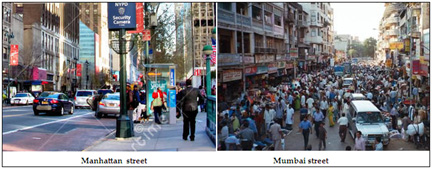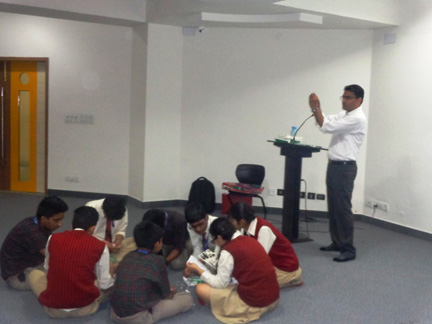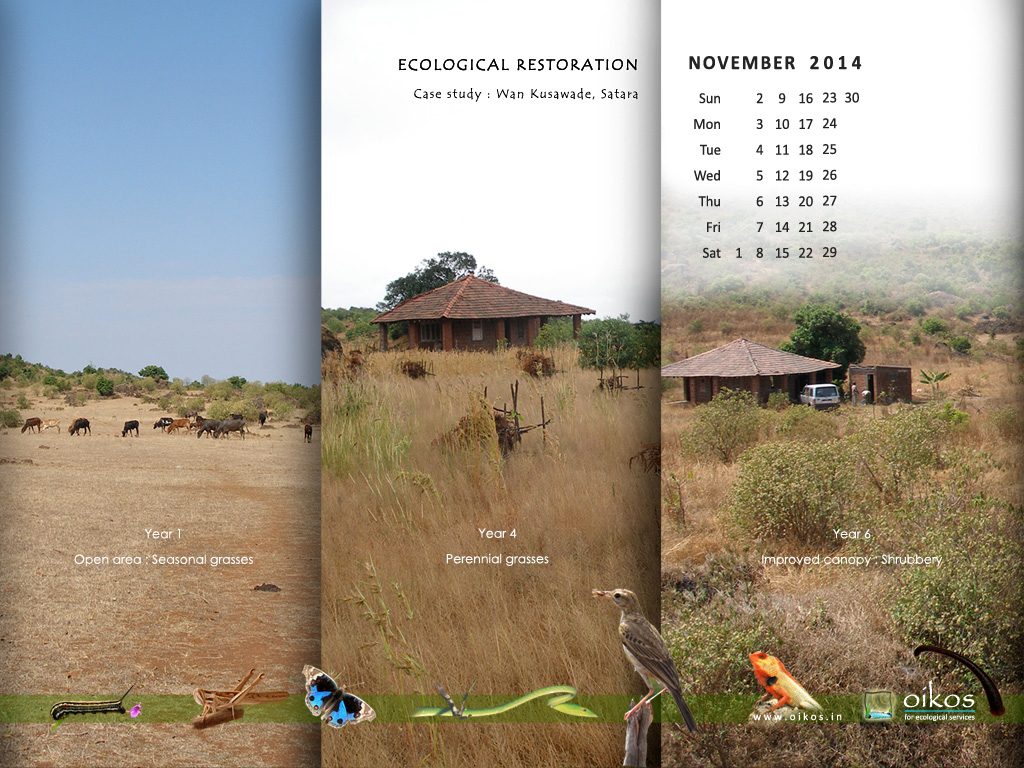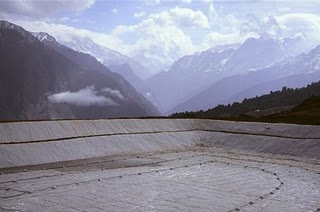Adventure
Climate Change and Global Warming-in simple terms
-Shashi Sharma
Climate change is here and a present danger to all of us is now established basis analysis of data of last 80 years.
We all know and are experiencing/observing
i) The discomfort caused by particulate matter in the air that we breathe. That is what, combined with ambient temperature, causes the smog that we see.
ii) Green House Gases (Carbon Dioxide, Methane and Nitrogen) are trapping heat close to the earth which is resulting in temperatures rising.
iii) Of course all of the climate control devices like air conditioners that we use (the heat that these generate when cooling indoors) and the concrete Islands that we have built in our towns,
when coupled with lack of greenery is resulting in heat islands (that translates into ambient temperatures in certain pockets being higher than open spaces). The earth is experiencing similar heat island effect with Green House Gases.
iv)Summers are becoming longer and that also resulting in lower crop yields because of this change in climatic conditions.
All of the above has been brought out so forcefully in the Synthesis Report of the IPCC (Inter Governmental Panel on Climate Change) in its report released during the current week.
Read
i)Our blog ‘Climate Change and Global Warming’ of July 12, 2013 for more
ii)Economic Policy Instruments for Reducing Greenhouse Gas Emissions formation of September 29, 2011
Watch a short film titled” Adapting to Climate Change in the Himalayas - Jhelum Basin experiences” at
Photo by Mousree Ganguli, taken two days before the flash floods of Uttarakhand last year
|
Attempt a quiz and win prizes
naliniezekiel@yahoo.in has answered all ten questions on the "Quiz on Global Warming" correct and his submission was the first to reach us.
Congrats Nalini. You will get a surprise gift soon.
omkarvadloori@rediffmail.com also answered all questions right.
Now, attempt a quiz on "Birds" at
You can try the quiz more than once. The first all correct answer to reach us wins a prize.
Red wattled Lapwing Photo Susan Sharma
|
Book Reviews
....And 13 other mysteries of nature
-Susan Sharma
Arefa Tehsin and Raza H.Tehsin are back to what they are doing best. Writing about wildlife!
Their latest book is called "Do tigers drink blood? And 13 other mysteries of nature" published by Rupa Publications India Private Limited.
Do crocodiles really cry? Why do fireflies blow in the dark? ............Familiar questions aren't they. Next time someone asks this question be sure to give the rational and scientific answer. Though the book is targeted at children, I have a feeling,
adults are going to enjoy it more, thanks to its racy and interesting style, ably illustrated by Kavita Singh Kale.
The book is priced at Rs 150 only for the print edition. It is also available as an e-book.
|
Burning Issues
Painting the smokestack black
The UN’s index to measure the well being of nations has been shown to be flawed, says S.Ananthanarayanan.
Professor Chuluun Togtokh from Mongolia, in evaluating the level of human development, has worked in the cost to the environment, and finds that when this is done the icons of success in human well being, according to the UN’s existing index for the same
measure, slip many places, to countries with more green and sustainable methods of living. He argues that the present Human Development Index, which is sponsored by the UN, has the effect of idolizing some of the most environmentally rapacious societies. Replacing
the index with one that considers environment friendly technologies would help project ‘greener’ countries and place a value on being responsible in the use of energy. Prof Chuluun Togtokh is a professor of ecosystem and sustainability sciences at the National
University of Mongolia in Ulaanbaatar and vice-chairman of Mongolia’s Global Change National Committee. His findings have been projected by the International Geosphere-Biosphere Programme (IGBP) of the Swedish Academy of Sciences and his article has been
featured in the journal, Nature.

Human Development Index
The HDI is the outcome of a most earnest effort, with origins in a report of the UNDP, "to shift the focus of development economics from national income accounting to people centered policies". Much of the credit for its formulation goes to Pakistani economist
Mahbub ul Haq and India’s Nobel laureate, Amartya Sen. Amartya Sen had opposed the idea of expressing the complexity of the human condition in a single index, but Haq argued that this was necessary, to turn the gaze of planners from economic indicators to
those of human felicity.
The formula worked out considers 3 factors as the indicators of welfare: health, education and prosperity. The indicator for health is the life expectancy at birth, of education the years of schooling and of prosperity, the per capita national income,
normalized against the Dollar by purchasing power. Complex mathematics has gone into arriving at the correct average to be considered and the final formula is formidable and scholarly, as can be seen in the box.

Based on this fine measure, formalized in this very month (November), 20 years ago, The United Nations have graded countries as more and less people friendly and have published the findings, to set up for countries lower in the ranking the examples of
the highest ones to follow and emulate. Apart from the validity of the method of ranking being open to question, there remains the uncertainty of the figures being adopted. But this has been the yardstick and nations the world over have been labeled, as low-human-developed
or backward, and road sign – to go towards higher ranking, has been used by industry, politics and advertising.
Carbon Footprint
With the clearly large incomes of countries like the USA, which have become large energy users, and compulsory school education, and good nutrition that they enjoy, the formula is guaranteed to show these countries as the most oriented to ‘human development’.
Professor Chuluun Togtokh questions the validity, in the present day context, at any rate, of the factors that are being considered. No doubt, the index has the merit of simplicity and apparently measuring what is important to humans. But the result is that
with only these goals taken as criteria, the other practices and means used by countries that score high get left out and the ‘gas guzzling’ developed nations have been ‘celebrated’.
While the world and the UN go to all ends to speak for ‘sustainable development’, the use of the HDI as a measure of development, which holds up the developed countries as ‘advanced’, raises grave questions about the real commitment to sustainability.
The per capita CO2 consumption in the developed countries, is of the order of 15 to 50 tonnes ( in 2008). (France is an exception, but this is because it generates over 85% of its electricity needs from nuclear plants). In comparison, the per capita consumption
(2008) in India was 1.4 tonnes and only a tenth of a tonne in Pakistan and some African countries. With burning of fossil fuels and industrialization rapidly polluting the earth’s resources and environment, the standard of living in the developed world is
clearly at the cost of others and the future of the earth – hardly the way for the rest of the world to go. But the HDI shows the largest offenders as the most people friendly and the world persists in the apparent belief that resources will last forever and
the earth will somehow survive ‘development’.
Prof. Togokh reworked the Human Development Index by taking one more factor into consideration – the per capita carbon footprint. Prof. Togtokh notes that the per capita carbon emissions are ‘a simple, available and quantifiable indicator’, which is seen
to be positively and strongly correlated with income and not at all with health and education. There is a question of what does income really have to do with ‘well being’ – if it is a means to real value, then the indicators of that value should speak and
income may best not be considered. But Prof Togtokh has only taken into account also the negative effect of carbon emissions, to make the formula a little more complete, and he has reworked the index as a Human Sustainable Development Index (HSDI), and found
new gradings.
The effect is that with this adjustment alone, some of the giants of development fall in the ranking – while others, equally affluent and with high living standards, rise in the ranking, thanks to their more green and carbon emission free methods.
Some of the countries are shown in the figure.
We can see that USA, Australia and Canada plummet in ranking, while, Norway, with low carbon emissions, stays high and Sweden, with and an even lower carbon figure, rises to No 2.
This change in the ranking alone is eloquent. It shows up the largest carbon emitters are not the best in the world. On the other hand it shows that countries with high living standards, like Norway and Sweden, can still keep carbon emissions down, by
adopting more responsible technologies. The earth, in fact, is in dire straits and massive reduction in energy consumption is the only answer. Politics and business keep this from happening, but information is also a powerful driver and the published Development
Index has great leverage in influencing individual motives and state policy.
[the writer can be contacted at simplescience@gmail.com]
|
Burning Issues
Planning housing in crowded cities
Noted town planning expert says densely packed apartments need to spread out, reports S.Ananthanarayanan.
On Friday, 24th, architect and town planner Shirish Patel spoke on “Life between Buildings – the use and abuse of FSI” at the Observer Research Foundation (ORF), Mumbai. ORF is a think tank which arranges talks by persons with insight and experience in
matters of interest. Shri Narayana Murthy on ‘Skilling India’s young workforce’ , Mr. Deepak Gadhia, engineer and entrepreneur on 'Solar Enterprise through Solar Energy', and Dr. Sreerup Raychaudhuri, professor at TIFR, on the significance of detecting the
Higgs Boson, were among many other recent presentations.

Mr Shirish Patel is a civil engineer who was with the Mumbai Metropolitan Regional Development Authority and Mumbai Heritage Conservation Committee and among those who first imagined and later implemented the New Bombay project. He is also on the Board
of the Indian Institute for Human Settlements, Kengeri, Bengaluru. Erudite and soft-spoken, Mr Patel led the audience through a primer on the issues that arise when dwelling spaces are created – particularly the need to support residents when they step out
of the dwelling. The talk was largely about Mumbai but the principles are the same for any Indian city.
Floor Space Index
Floor Space Index (FSI) or Floor Area Ratio (FAR), as it is known the world over, is the ratio of the built-up area in a plot of land, to the area of the plot. Local administrations, considering the need to provide water, electricity and sewage services,
put a limit (or ceiling, may be more appropriate) on how much dwelling area a builder can construct on a given plot. Increase of the FSI is welcomed by builders, as they can sell more flats, and is equally welcomed by flat buyers, as it would increase availability
in the best areas and hopefully bring down prices. The ratio is between 1.3 and 3.8 in Indian metros. This compares with FAR in many cities in the world, but is far lower than the figure in New York or Singapore.
Shirish Patel started with the context of FAR as encountered in the major cities of the world (see table). In view of the high concentration of population in Mumbai, like in New York or Singapore, Shirish said, the World Bank was pressing for FAR to be
increased in Mumbai, and this was the demand of builders and citizen groups. But, said Shirish, along with the increase in the number of people housed over a unit area of land, there was the importance of space for amenities and social interaction outside
the dwelling space itself.
|
City
|
FAR
|
|
Sao Paulo
|
1
|
|
Mumbai
|
1.33
|
|
Chennai
|
1.5
|
|
Delhi
|
1.2 to 3.8
|
|
Amsterdam
|
1.9
|
|
Venice
|
2.4
|
|
Paris
|
3
|
|
New York
|
15
|
|
Singapore
|
12 to 25
|
In the context of FAR of 15 in Manhattan and 1.3 in Mumbai, Shirish displayed pictures of street scenes in Manhattan and Mumbai. Was it contradictory, that Mumbai, with the lower FAR, seemed to have more crowded streets?

Shirish noted that cities and even different parts of cities differ dramatically in layout and the use of space. To understand how a city should be developed, the planners and residents need to consider traditional space use, the number of floors in dwellings
and the number of people who use these spaces. Thinking in terms of FAR puts the emphasis on the available dwelling area and hence the area available for each resident. A more communicative measure, Shirish said, was to consider not the area available but
the level of crowding, particularly out there in the street. The difference between Manhattan and Mumbai, which affected street crowding, lay in the number of people using the dwelling space that the FAR allowed. In Manhattan, a typical flat of 100 m2 was
occupied by 1.8, say 2 persons. But in Mumbai, a 25 m2 flat was home to 5 persons. Over a hectare, this translates to 200 persons in Manhattan and 2000 in Mumbai. During the day, the large part of these people were out on the street, shopping for essentials,
for leisure, traveling to or from work, or at work. And Manhattan, with its lower crowding except in the busiest portion, had the use of an underground Metro network!

Working out crowding
Well, street crowding in the worst area in Mumbai compares with Midtown Manhattan, where they have FSI as high as 16.4 and also the relief of a high speed underground metro railway. But the bulk of Mumbai, with FSI just 1.12
to 3.66, is still as bad as second busiest part of Manhattan. It is clear that there are too many people in Mumbai for the available residence, street, market, office or park area.
With the number of residents, which is the population, not under the control of the town planner, Shirish saw review of the rent control laws which, at present, discourage investment in housing for tenancy, as one way to go. He is skeptical about public
housing or free housing and believes in legislation for inclusionary housing, or obligation of all new construction to set aside floor space for low cost housing. For this, as well as for investment in housing, there is need is to allocate more land for the
purpose. This would amount to providing access to open spaces in the vicinity of cities. But Shirish saw the hand of builders’ lobbies in diverting state funding to the kind of infrastructure that did not address this need, but sustained the shortage of housing,
and hence high prices. “And”, Shirish Patel quipped to conclude his talk, “the World Bank would like us to increase the FSI in Mumbai!”
[the writer can be contacted at simplescience@gmail.com]
|
Burning Issues
Saving Planet Earth
-S.Ananthanarayanan
Population
Malthus’ catastrophe has not struck for 2 centuries because of the industrial revolution – while the world’s population grew 6-fold, the average per capita income rose 10-fold. But prosperity did not come free – it strained the earth’s resources and if
population keeps rising, the world may choke within our lifetimes. The UN, in highlighting Danica May Comacho, the 7 billionth inhabitant of the earth, waves the red flag – we have a crisis on our hands! Runaway growth of population was perhaps inevitable
- only prophetic foresight and coercive social planning could have staved it - and it is not wholly clear whether the march of science has increased or mitigated the consequences. The good news is that population growth has shown dramatic deceleration since
1990, when annual births were around 135 million. This is mostly because of economic growth and better family planning in poorer countries, and the birth rate is slowly dropping to the no-damage rate of 2 children per woman. “Annual population growth has already
dropped from 1.8% around 1950 to 1.1% in 2010 and is expected to reach zero around 2060–80,” says the Nature report [see box].
But avoiding further growth is not the solution as we already have more people than the planet can support. The next decades need to find ways to feed these 7 billion, grow more food without encroaching on land or using up the water, to generate power
without ravaging the environment and to use less power. And also to reverse the direction of population growth.
Pollution
The single great resource that this large population consumes is energy. The graph shows the tremendous increase in the use of coal, petroleum and natural gas in the last century. Burning coal and petroleum or gas creates carbon dioxide and global warming
that it leads to will alter the face of the earth itself. But the great bulk of business, industry and governments act as if they have not heard about it! Nations continue to pursue high growth rates and encourage consumption. A government official once said
air conditioning large spaces could be an answer to global warming!

Like controlling population, curbing energy use is not easy in an interconnected world. It is individual efforts that must bring home to the 7 billion that the free ride is over. It is not for nothing that Al Gore was awarded the Nobel for his work of
blowing the whistle. And still, there are skeptics, either real ones or driven by greed. The work of Lisa Jackson, to create explicit state policy and then to pursue its implementation – for conserving energy use and eco-friendly generation – is what responsible
people need to emulate the world over
Science
Essam Sharaf, 59, an engineer and professor at Cairo University, was a fierce critic of Hosni Mumbarak, the erstwhile Egyptian president. As an active participant in the uprising earlier this year, he was elected Prime Minister of the new government. Sharaf
believed that the answer to Egypt’s problems, from water security to energy, lay in science. His cabinet lost no time in revamping the education system and took up creating a university of basic and applied science – the ‘Zewail City for Science and Technology’
(after Ahmed Hassan Zewail, Egyptian origin winner of the Nobel for chemistry in 1999).
But good intentions do not carry the day and in November, Sharaf and his cabinet had to resign. When Egypt will resume the work to bring science on board is uncertain. Popular governments, by definition, rely on the support of the majority – illiterate
in many parts of the world and unlettered in science in most. And yet, it is a world that is driven by science. Electricity, communications, food, housing, health, even warfare – depend on science and the global web of technology. A few Moghuls hold the strings,
all others are consumers – soon to be consumed by problems of their own making. Vulgarisation of science – both for science practices in daily life as well as to understand where government policy is leading – is the answer to bring the survival instinct of
the species into the act. The great divide – between ‘science’ and ‘non-science’ persons, needs to break down – science needs to be seen as important, it needs to be seen as ‘cool’.
Else, short-term commercial interest will lead us over
|
Environment Education
Workshop on Solar Energy for School students
-Bhavesh Swami
What happens when students learn about solar energy in a fun way?
Rather than just seeing current flow through voltmeter, they understand the concept better; start experimenting with solar modules on their own.
This is what happened during a recent hands on workshop at Manav Rachna Public School, sector 46, Gurgaon.
The ‘Solar Energy for students’ program was organized as part of Science week to commemorate the successful Mangalyaan Mission and other achievements in the field of science and technology by Indian scientists.
The program started with an orientation session for students introducing them to the horrors of climate change and the resultant effects on planet earth and its habitat.
Concepts of rainfall pattern change, decrease in crop yield, increased vulnerability to diseases and more severe rains and sea side calamities were discussed with students who took keen interest in understanding the science behind these abnormal occurrences.
The students were honest to admit about reading about these in newspapers but were not fully aware of the root cause.
As part of the solution regime, low carbon lifestyle and use of renewable energy in day to day life emerged as the most suitable option. But students were not able to appreciate the technical knowhow on how these modules generate energy. A simple ammeter
reading showing current flow was not exciting them enough, a student admitted, who learned about this as part of physics practical. This is where we pitch in with the solution, said Bhavesh Swami, the man behind this workshop. “What we do is, we make these
learning a fun for the students”. He showed a DC motor that was having a fan at one of its end and as soon as the solar module was connected with it, the motor started making a movement. What we do is, attach these module and motor to a boat like structure
or wind mill prototype, so students appreciate the concept better. Things are the same, the same current is flowing but the knowledge transfer is fun. “Now, put these 3 or 4 models in water and see the motor race among these student groups. They are better
engaged and would be learning for them for their entire life. Sometimes, I get call from these students that how to design water flow motor or a solar inverter, what is this, further interest of students, translated to real time examples”.

The Headmistress of the school, Mrs. Neelu Sharma, said”We believe in the philosophy of ‘learning by doing’ and this kind of learning experiences are a good not only for students but the teachers alike. These budding minds are further encouraged to participate
in national and international events that propagate the message of usage of renewable energy and similar technologies.
Mrs. Carol, Sr. counsellor said that students from Manav Rachna University have participated in World Solar Challenge in the past which is a famed event in which students design and showcase their vehicles running on renewable energies for distances spanning
as long as 3000 kms. To know more about these events or to have a similar workshop to be conducted at your school, college or corporate office, one may contact the organizer on solarpower2india@gmail.com or call at 09971470979.
|
Events
WORKSHOP ON GREEN CSR
REGISTRATION ANNOUNCEMENT
An event worth attending on 3rd DECEMBER 3 2014
By
Ladybird Environmental Consulting
Are you seeking CSR solutions in the field of environment which are beyond the cosmetic tree plantation approach? Would you like to link your CSR initiatives and employee engagement programs to United Nations Biodiversity goals and National Biodiversity
Board (NBB) frameworks and see how your company is helping the Indian Government to achieve its country targets? Is your company planning to address PM’s initiatives ?
If answer to any of these questions is YES, then the Ladybird Environmental Consulting LLP (LEC) in collaboration with Maharashtra Chamber of Commerce, Industry & Agriculture (MACCIA) is holding an unique workshop which will help in developing green
ideas for your company’s CSR. The workshop format involves panel discussions, brainstorming sessions, case studies, presentations & group work.
This workshop is suitable for CSR managers, CSR professionals, NGO professionals, HR managers and qualifies under CSR spend as capacity development of staff and partners.
FACULTY
Dr. V.Shubhalaxmi, Founder & Director of Ladybird Environmental Consulting LLP
Ms. Jyoti Palekar, Co-founder and Managing Director, STEP Private Limited
Ms. Charvi Parikh, President me2green
Ms. Shriya Bhatia, Environmental Planner at MMRDA
Ms. Renee Vyas, Plant Specialist
PANELIST
Mr. Rushikesh Chavan, Consultant, Wildlife Conservation Trust
REGISTER TODAY at
WORKSHOP DETAILS
Venue: MACCIA, 6th Floor, Oricon House Building,12, K.Dubhash Marg, Near Lion Gate, Fort, Mumbai – 400001.
Time: 9.30 a.m. to 4.30 p.m.
Fee: Rs. 3500/-* per participant. Rs. 3300/- for more than one participant from same organization. (includes study materials, certificate, meals and refreshments). *Additional 12.36% service tax will be applicable.
Schedule & workshop topics
Opening speech on Role of Biodiversity in Businesses
Panel discussion on CSR Ideas related to Conservation Issues, Communication Education & Public Awareness, Waste management and Water sustainability
Plantation with an Ecosystem Approach
Green Employee Engagement Initiatives
Case study on Waste Management
Case study on Water Sustainability
How to align CSR and Sustainability activities with national and international environmental frameworks
Groupwork on developing green CSR plans in alignment with core businesses
Group presentation
REGISTER TODAY at
|
Forest and trees
Can we grow forests and trees in degraded lands?
Can we grow forests and trees in degraded lands. Yes, of course, says Ketaki and Manasi of Oikos. Here is what Oikos has been doing.
Less populated rural areas have great potential for restoration; also, the source regions or catchments of rivers and streams.
Ecological restoration is bringing back the mature state of an ecosystem, with the help of techniques that would imply zero or minimum carbon footprint. Oikos has been restoring a piece of 24 acre in district Satara in Maharashtra. Thanks to owners who
happily agreed for ecological restoration of forest. Simple techniques like protection with the help of dry thorns, live hedge, loose boulder bunds, percolation ponds, stabilization of eroding soil, seed dispersal, plantation of native plants, etc. were carried
out in last 8 years.
And results are positive in terms of : Improved soil moisture, Temperature reduction of soil by 15 0 c, Change in flora from seasonal to perennial grasses, Development of safe sites for nesting of birds, Perennial food availability for micro consumers
like spiders and geckos,
Improved regenerating capacity of soil, Considerable drop in watering the saplings due to improved soil moisture, Continuous increase in biodiversity. All these results indicate better health of the ecosystem and progress towards mature ecosystem. Though
years to go…
Ecological restoration of degraded areas which are not used by human community for cultivation will ensure better ecological conditions for future.
Download this screen saver which tells their story.

Buy their informative Cd on local trees of Sayadri forests from our product store.
|
Members Speak
The little green tux
Sharad Bhutoria
We combed through the Jaypur forest in Assam. Which I believe is the most underrated forest we have in India. This being a fact I am jealously happy about.
I found myself suddenly alone. A position I would rather not be in a forest. Although it is not the public opinion, given that I spend more time in one that my peers. My companions each set off in pursuit of their dreams. And I apparently was left to
find something dream-worthy.
As I stood there cursing my ‘not friends anymore’ for deserting me for birds, the feathered kind of course. As the two gentlemen I was with would only take after any member of the fairer sex if the femme had the word cannon printed on an item of her clothing,
a little above her heart line. I was certain that was a far cry. I was also certain that far crying was out of the question as it would spook the camera and Lord knows we can't have that.
The place my feet took root was becoming more and more familiar to me now. As my body had just launched a coup de etat and won against my, not so keen anymore, mind. I saw some of the local gentry. These folks were obviously displeased to see me. I had
called on them very early on a Sunday morning and most of them were in the middle of breaking fast. This was made abundantly clear to me by vocalisation from all 360 corners. After saying I'm sorry I walked slowly away. By this time however, having heard the
various calls of nature I found myself needing to answer a very specific one. To which end I crossed 2 blocks of bushes looking for a garbage dump behind which I could give back to the earth.
But before I could find said garbage dump my eyes fell upon this patch that I could only describe as an amphitheatre. It was obvious really. Immaculately clean with a stage front and centre and seating arrangements on various levels. Even some vip seats
hidden away for celebrities who did not wish to be harassed by paparazzi.
Suddenly I realised what was happening. I had gate crashed into an opera that was just about to begin. In two flaps of a wing the guests where all seated the house full and as were the vip boxes. I desperately had to see this but as an amateur photographer
I knew I couldn't secure an invite. I did what anyone in my position would do. I assertively walked into the press box and I was allowed in no questions asked. It must have been my camera my bad haircut and worse dressing sense. It's great how people don't
ask press folks anything. I sat myself down and readied my equipment.
A minute later came our star of the morning show. They say fine feathers make fine birds and the individual in our present interlocutor was definitely personifying this. A sharp looking fellow not too tall.
Well barbered and immaculately tailored, wearing a green tuxedo so well made it was as if he came from a family of tailors with a beautiful black bow tie. His designer and his stage management must have been friends as it was in plain sight how well the
two were colour coordinated. As soon as he began the crowd hushed, everyone put down the various snacks being served and gave him the attention he so commanded. It was his stage now, he owned it. His voice had the effect Verdi had on European aristocracy of
the old world...spellbinding.
His voice sharp but sweet. His manner tasteful. He won the hearts of every girl within a 2 meter radius. Even if they were not his type. After gracing us with his sonnet for a few minutes. Minutes which seemed noticeably short he was off. To his next performance
perhaps. I'm sure he is over booked with shows with that kind of talent. So off he whooshed leaving all the men alive in applause and the women yearning for more.
I was just happy that I got lost into finding him.
Pics of the tailor bird by Sharad Bhutoria
(Sharad can be contacted at sharad_bhutoria@yahoo.com)
|
News and Views
Clinical waste disposal a big concern as hosps mushroom
Dutch to kill 8,000 ducks to prevent bird flu outbreak
Global Warming
Panel approves change in waste processing technology
SAIL's IISCO steel plant takes first steps to make green steel
Delhi’s pollution woes: More than 15-year-old vehicles not permitted to ply
http://indianwildlifeclub.com/MediaCenter/Press-Releases.aspx

|
News and Views
Bilayat grass, also called trap grass, could be the thing to prevent landslides. The roots of this variety of grass grows into soil and rock, and binds matter so fast that land will not slide. A non-governmental organisation in Nainital, working in collaboration
with the Bareilly-based Indian Veterinary Research Institute, has suggested that this grass could be grown in the hills of Uttarakhand to prevent landslides.
Read more news items at
http://indianwildlifeclub.com/MediaCenter/Press-Releases.aspx

Failed attempt at Auli to make artificial ski drive
|
Press on environment and wildlife
Greens object to gas line from Mengaluru to Bengaluru
[http://cmsenvis.cmsindia.org/resources/newspaper/details.asp?id=65639]
Only acouple of months ago forest officials had refused to permit laying of apipeline through forests for supply of water to Kalasa town in
Chikkmagalurudistrict, but now their silence over a pipeline being laid to carry gas fromMangaluru to Bengaluru, which could destroy a large number of trees enroute, isnot going down well with eco activists here.
Strongly objecting to the gas pipeline work inprogress in Mudigere, vice-president of a local organisation, Karnataka Dwan
Restrictions on Killing Wild Boars Relaxed
[http://cmsenvis.cmsindia.org/resources/newspaper/details.asp?id=65671]
THIRUVANANTHAPURAM:TheCabinet on Wednesday decided to simplify the law governing the culling of wildboars damaging crops in select eastern districts
of the state.
The plan is to give permission to farmers to killthe boars in their own land using a licensed gun or otherwise.
MCC videos spread message on garbage management
[http://cmsenvis.cmsindia.org/resources/newspaper/details.asp?id=65670]
MYSURU : The Mysore CityCorporation (MCC) has come up with an interesting idea to sensitize Mysoreansabout maintaining the
beauty of the Heritage City. Civic bodies have come upwith short video clips on effective waste management and the ill-effects ofunhygienic conditions. They'll be screened on local TV channels and in moviehalls and public places. Civic bodies, public representatives
and actors featurein these videos.
'Environment-friendly' Simhadri Power Plant Bags SwarnaSakthi Award [http://cmsenvis.cmsindia.org/resources/newspaper/details.asp?id=65590]
VISAKHAPATNAM: SimhadriSuper Thermal Power Plant (SSTPP) of NTPC has bagged the prestigious SwarnaSakthi Award for the large
scale activities taken towards minimising pollutionand protecting the environment. NTPC chairman-cum-managing director Arup RoyChoudhury presented the award to SSTPP group general manager AK Samanta at afunction held in New Delhi recently where NTPC regional
executive director(South) R Venkateswaran was also present.
India’s first net zero energy building
[http://cmsenvis.cmsindia.org/resources/newspaper/details.asp?id=65621]
Functional since a year, atour of the Indira Paryavaran Bhavan, a building under the Central Government,was organised by
The Energy and Resources Institute (TERI) and the Associationfor Development and Research of Sustainable Habitats on Tuesday. It was aimedat reinforcing the need for more such buildings across the country.
Green court calls for stricter measures to control smog dueto burning stubble
[http://cmsenvis.cmsindia.org/resources/newspaper/details.asp?id=65547]
The National Green Tribunal(NGT) on Monday asked the Centre to take concrete steps to check burning ofcrop residues that result in choking smog spells, aggravating
the already highpollution levels in Delhi.
Dharmasthala goes green with units for treating waste water [http://cmsenvis.cmsindia.org/resources/newspaper/details.asp?id=65548]
MANGALURU: Temple town ofDharmasthala ushered in a new system on Sunday that recycles waste watergenerated from various
guest houses. Once purified, the water can be used foragriculture purposes. Inaugurating the new system set up at a cost of Rs 1crore, minister for environment, forest, ecology and DK district in-charge, BRamanath Rai, said that a scheme will be formulated
to replicate this model inone town municipality and one gram panchayat with government funds.
Mass plantation drive to come a cropper?
[http://cmsenvis.cmsindia.org/resources/newspaper/details.asp?id=65579]
VISAKHAPATNAM: The stategovernment's ambitious plans of planting 10 lakh saplings as part of a mass plantationdrive in the city seem to have come a cropper with officials unable to garnerthe requisite
number of plants and other paraphernalia, forcing the authoritiesto push the drive back from November 10 to 17.
450 tonnes of mixed waste gets processed in this plant everyday [http://cmsenvis.cmsindia.org/resources/newspaper/details.asp?id=65514]
Waste issegregated using machines; wet waste composted
Workers in hats and boots stand beside a bigmachine, while a few stand in a corner sipping hot tea. Hard to believe thatthey are working inside
a shed where 450 tonnes of garbage from the city isbeing segregated by a machine ahead of it being processing.

Pic White eyes-Susan Sharma
|
Press on environment and wildlife
Villagers Come Together to Oppose Garbage Units
Government starts pest management programme
Bureaucrats in class for green economic growth lesson
High density of leopards in Bhadravati division
Pallavaram residents can teach a thing about Rain WaterHarvesting
Lioness’ death revives debate over Etawah Safari
Pobitora Wildlife Sanctuary in Assam reopens
Come February, gharials to swarm Punjab rivers again
UN Climate Change panel calls for phasing out fossil fuels
Read details at
http://indianwildlifeclub.com/MediaCenter/Press-Releases.aspx
|
Transcript of chat online
|

"Insect Tourism" on 16/11/2014 at 7.30 PM |
| |
Moderator |
Dr.V.Shubhalakshmi |
|
Dr. V.Shubhalaxmi, Founder & Director of Ladybird Environmental Consulting LLP
Previously with Bombay Natural History Society |
|
Details |
The chat will begin at 7.30 Pm on 16th November, 2014
Entering the Chat Room
- Chat Room opens about 5 minutes before the Chat Session begins
- Chat Room Home Page provides a link 'click here' to enter the Chat Room (available only when the Chat Room opens)
- Once you click the Link 'click here', you will be prompted to enter your email address and IWC Member password
- And you are guided into the Chat Room
http://indianwildlifeclub.com/Chat/Chat-home.aspx
Team IWC
|
|
WildlifeQuiz
Attempt a quiz
ravi.sekhar.9@gmail.com has answered all ten questions on the "Quiz on Birds" correct and his submission was the first to reach us. Congrats Ravi. You will get a surprise gift soon.
s.archismaa@gmail.com, prabha.slp@gmail.com and sabinajayapalan@gmail.com also answered all questions right.
Now, attempt a quiz on "Quiz on are we poisoning our Home Planet?" at
http://indianwildlifeclub.com/Quiz/Quiz.aspx?qid=12
You can try the quiz more than once. The first all correct answer to reach us wins a prize.

Tree by
Lyla
|
WildlifeQuiz
Attempt a quiz
sabinajayapalan@gmail.com has answered all ten questions on the quiz "Are we poisoning our Home Planet?" correct and her submission was the first to reach us. Congrats Sabina. You will get a surprise gift soon.
Now, attempt a "Quiz on Apes" at
You can try the quiz more than once. The first all correct answer to reach us wins a prize.
|
WildlifeQuiz
Attempt a quiz
naveen.revanna@outlook.com from Bangalore has answered all ten questions on the "Quiz on large mammals" correct and his submission was the first to reach us. Congrats Naveen!
You will get a surprise gift soon.
chethu.venky07@gmail.com, deepikaks1990@gmail.com and sangieta.chawla@gmail.com have also answered all questions right.
Now, attempt a quiz on Global Warming at
You can try the quiz more than once. The first all correct answer to reach us wins a prize.
'I pray for water, not nectar' Cartoon by Dileepa Dalawatta
Source: http://www.sundaytimes.lk/100321/Magazine/sundaytimesmagazine_03.html
|